Creating a Strong Gacha: How the Pros Make Sure Duplicates Aren’t ‘Bad Drops’
Due to the Star Wars Battlefront II controversy, the industry is taking a far closer look at what monetization practices are ethical, and whether the industry can police itself or needs further regulation to avoid misuse.
In the meantime, it’s likely loot boxes will still be featured heavily in the top charts as the revenue potential of gacha and loot boxes is hard to ignore. Using a random drop system has allowed many new genres and core loops to flourish.
However, designing for gachas isn’t a simple design process. Not all genres and not all types of gameplay can be ported to support a loot box design. We’ve already talked about some of the necessary ingredients:
- Part 1: Ensuring your gacha system has enough depth to sustain drops over time
- Part 2: Ensuring your gacha system has enough width to ensure that each drop is useful to a player
Now, it’s time for the third element: how to handle duplicates. It’s what we call an edge case, but it’s a process that will define how your game will feel over the long haul: Do players feel like duplicates are useful or useless?
Duplicates vs Bad Drops in a Gacha System
The first thing to master when it comes to a gacha system is how to think differently about two situations that can arise; duplicates and bad drops.
For example, let’s assume that we have a Gacha system similar to Overwatch – our boxes only drops cosmetic items. As a result, each item that we drop is permanent (the player keeps it forever and it can’t be “consumed”) and players are chase after the cosmetic items they want for the characters they play as.
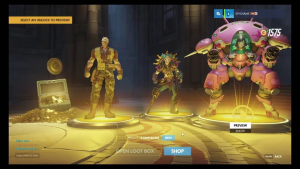
In this system, a ‘bad drop’ could be a cosmetic item for a character that I don’t play as – maybe in the future I will, but for the time I’ve been playing I haven’t taken to the character in question. As such, this is most definitely a bad drop.
Ideally, I should be able to convert this item into something of value so that I can eventually get the items that I want. In games such as Overwatch and Hearthstone, this means converting any bad drop into a dust-currency, which allows you to purchase the items you want directly.
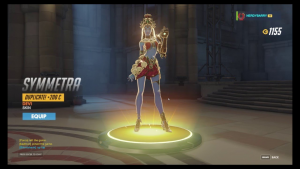
However, also inherent in this system are duplicates. In this situation, I receive the same cosmetic item for a character that I already have, which feels like a big loss. It’s doubly frustrating if the game drops a high rarity duplicate (i.e. a legendary skin) as this feels like a massive waste – I was lucky enough to receive a legendary item, but unlucky that it was an item that had dropped before.
As previously suggested, games like Overwatch and Hearthstone handle this by allowing players to convert these items to dust, essentially treating a duplicate the same way as a bad drop. However, the amount of dust dropped is a fraction of the cost of purchasing the skin you want directly, so players still feel terrible when they pick up a duplicate.
As a result, Overwatch eventually went public about adjusting the drop logic to avoid duplicates as much as possible, while Brawl Stars even removed duplicates outright. However, in my view it doesn’t need to be this way. Removing duplicates from your system reduces depth, and puts more pressure on your team to develop more content. Ideally duplicates would be celebrated by players, making this rare occurrence into something of value, rather than serving as a regretful outcome.
In light of this, let’s look at how to build out better gacha duplicate mechanics:
Six Mechanics for Handling Duplicates
#1 Duplicates Aren’t Duplicates
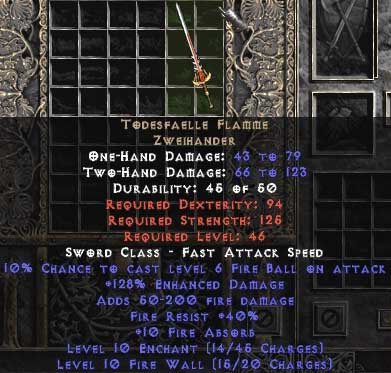
A different way to avoid the pain of duplicates is to make sure duplicates rarely happen.
One way to do it is to make each piece of content generate in many subtly different ways. For example, a weapon or character can drop, but certain sub-elements are randomized and generated.
Using this method, if a duplicate item drops, there are smaller comparisons that players can make between the drops. This is done when gear or drops are both procedurally and randomly generated and there are enough smaller detailed stats that players actively want to optimize.
For example, in the first Destiny you could get the same piece of gear dropping many times.
However, each drop had randomized stats and perks associated with it, causing players to head into a chase in the end game to find unusual builds of gear. The game included perks that offset the problem of some guns being overpowered in competitive modes like The Crucible. While this obviously went overboard causing severe balancing issues, this shows the power of procedurally generated gear – it deepens the chase and makes duplicates something players actively go after.
However, this system can result in players ending up with mountains of weapons and gear that they don’t want to use. As a result, designers need to find ways of converting all bad drops into something of use to players, such as:
- Gold to purchase more weapons
- Dust to re-roll the weapon perks of your choice
- Resources to upgrade the weapons that the player actually wants
While such solutions put the duplicate issue to bed, it also puts more pressure on the bad drop system.
#2 Repair
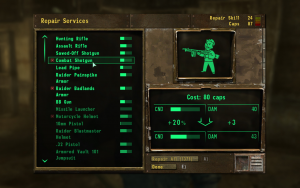
One system that hasn’t been used often is the repair system..
Fallout 3 used this effectively by asking players to collect duplicates to maintain their gear. Have an amazing piece of gear? It will eventually deteriorate and be less effective over time. To repair it, you can pay a large amount of currency or find duplicates of your gear to repair for free. If the deterioration is felt as fair to players, this can create a repeatable grind to find duplicates of your gear to maintain its highest possible gameplay effectiveness.
This system is likely avoided because of the consumable feel that drops from the gacha become: The feeling that an amazing item will drop, but one that’s only useful briefly. It’s a feeling that anyone who played Zelda: Breath of the Wild will definitely find familiar
#3 Fusion (Unlocking Potential)
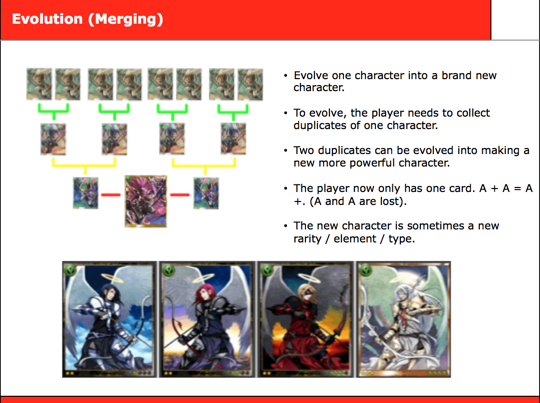
[Source: Both Guns Blazing]
Fusion is the typical way that Japanese and Chinese games have made duplicates relevant. These games typically focus on selling stat improvements over cosmetics, and because of this they focus their duplicate mechanics more on unlocking higher stat growth.
Fusion mechanics are designed in a way that requires the player to receive a duplicate in order to increase the stat potential of a card. As such, while you can upgrade a card up to high level, unlocking the ability to upgrade it even further requires you to “evolve” or “awaken” the card with a duplicate of itself.
When looking at the stacking probability needed to get the highest star rating, it’s easy to see why they do this. You can drive a lot of depth in a gacha system by asking players to chase after duplicates without adding more content.
The problem with this comes in the randomness of the system. Getting a single duplicate becomes so important in this system that players can become very frustrated. Players have no grindable path to unlock the potential for their favourite characters. Hence, designers came up with a new system: Sharding.
#4 Sharding
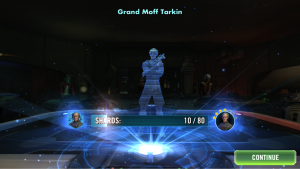
As duplicate systems changed over time, there was a need to make them more flexible and granular.
To solve the issues of fusion, gacha games started to experiment with shards instead of duplicate fusion, best seen in Western Gacha games like Galaxy of Heroes. With shards, each character can’t be unlocked until you have collected a certain amount of shards. In the above example, Grand Moff Tarkin requires 80 shards to be unlocked.
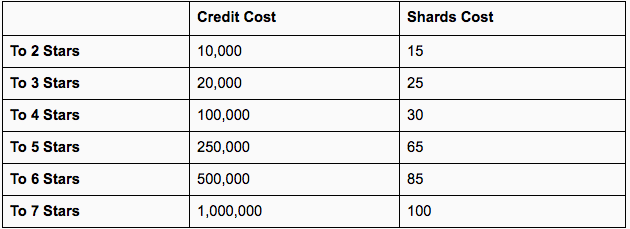
However, that’s just to unlock the character. To upgrade the character to its maximum potential, the player would need to collect additional shards, so “duplicates” are simply just additional shards needed to progress to the maximum potential.
With characters now needing hundreds of shards instead of single drops to reach the maximum characters, games added mechanics which allowed players to grind for specific shards, so players that are looking to upgrade or unlock their favourite character could grind specifically for it. This wasn’t possible with the fusion system before, since giving a single card could mean massive progress for players. In short, sharding allows clear progress.
However, there remains one big problem: opening up a gacha pack you’ve paid for and receiving mere pieces of a character – nothing that you can use there and then. It’s a transaction the player almost always regrets and, as a result, Supercell came up with a workaround.
#5 Unlock & Upgrade
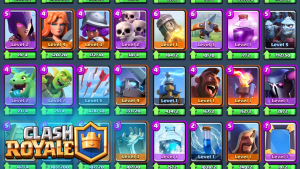
Clash Royale provided a completely new framework for how to handle duplicates. It took the best of the Shard framework, made the handling of duplicates restrictive, yet still has a gacha system that feels fair.
With Royale’s system, each card is unlocked after getting the first card. This feels far better than shards because getting a new card feels amazing – there’s no more paying for “parts of a character”.
After you unlock the card, the card becomes a duplicate sink. In order to upgrade the card, you need to collect a number of duplicates of that card. It removes any needed management of duplicates, while giving a clear path for players to upgrade their cards.
Due to the design, players will unlock cards fairly quickly (you only need one card), but the majority of the chase is after the (thousands) of duplicates necessary to upgrade your cards to a competitive level. This system has significant depth, allowing Supercell to be generous with the cards it gives out, and keep players collecting for years.
However, despite its perks, this design still has disadvantages. For one, Clash Royale has to work really hard to try to ensure that as many cards as useful to players as possible. Otherwise, getting a duplicate for a card you aren’t using is completely useless (the only way to get value from it is to trade it away to clan mates). This works very well for CCG style games, but many games can’t support this level of gacha width – where every item from the gacha is theoretically useful.
#6 Unlocking Better Cosmetics
All these mechanics thus far are primarily focused on handling situations where duplicates give out better stats – they “unlock the potential” of an item so they can be upgraded further. This works great for games that are RPG-based and are comfortable with players speeding up progression (ex. Clash Royale), but most competitive PvP games can’t do this, such as Playerunknown’s Battlegrounds, and League of Legends. Competitive PvP games can really only sell cosmetics. So, how do you add value to duplicates for cosmetic economies?
This is considerably harder, which is why most cosmetic driven games end up allowing players to convert duplicates into dust (ex. Overwatch) or allow players to sell them on a secondary market (ex. Counter Strike: Global Offensive). League of Legends has even dabbled in at first not fully “unlocking” the cosmetic, but only allowing the player to “rent” the cosmetic. Getting duplicates eventually allows the player to convert their duplicates into a permanent item.
However, beyond this, the only thing you can do is make duplicates of cosmetic gear unlock cooler/better visuals of a cosmetic item. In Counter-Strike: Go (CS:GO), they use a “decay” system to do this.
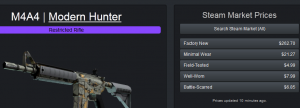
In CS:GO, each item is dropped with a randomly assigned “decayed” attribute. This could mean that the item looks brand new, or is heavily worn down. Getting a duplicate allows players to find items which have far less wear, meaning that players aren’t just chasing that “item”, but also chasing the best looking version of it. The visual differences between “Factory New” and “Battle Scarred” are striking – making the value of having the highest valuable version of the item very important to players that are chasing after cosmetics.
As such, similar to stats, cosmetics can have a “unlocking potential” of their own – you just need to make sure your cosmetic items can have varying degrees of visual quality.
Summary: Duplicates aren’t Bad Drops
In any Gacha system, regardless if you’re just dropping cosmetic items or gameplay impacting items you, as a designer you are responsible for ensuring that there is as little remorse or regret from players – for making sure that each purchase of a loot box feels rewarding to players.
- Gacha depth helps ensure that you can sustain drops from a gacha.
- Gacha width ensures that each item is as useful as possible.
- However, Duplicates are inevitable, and how you handle them is important to achieve the balance between a system that feels fair to players and doesn’t cripple your studio by producing lots of content.
There are seven examples of mechanics you can use to handle duplicates and give them value:
- Dust: Allowing players a path to purchase items they want
- Duplicates aren’t Duplicates: Using procedural generation to have subtle differences between drops
- Repair: Duplicates can power up a previously owned item
- Fusion: Unlocking further potential
- Shards: Breaking fusion up into a more granular path
- Unlock & Upgrade: Unlocking higher stat levels with duplicates, no option for duplicates
- Unlocking Better Cosmetics: unlocking better looking versions of the same cosmetic
Each have their pros and cons, but hopefully can help you decide what is the best path for your game.
Brawl Stars vs Clash Royale : Designing a Strong Gacha
When Supercell launches a new game, it sends shock waves around our industry and players alike. On June 14th, Supercell released Brawl Stars — and in typical fashion, we all jumped on to give it a try.
But there was something special about when Supercell launched Brawl Stars. The game was Supercell’s first outside of the strategy genre. Brawl Stars is the first action-based multi-player game for Supercell, and notably, the most casual MOBA style game launched for mobile to date. Supercell also publicised the launch, beginning with an e-sport style tournament. This isn’t a typical soft launch; they are already building up a massive community and driving a strong streamer culture around this game. This was a bold move for Supercell. Supercell has been known to stop games such as Battle Buddies, Smash Land and Spooky Pop when they don’t look like they will become a top 10 game. Going into this soft launch with so much confidence is bold.
But weeks after the game has been launched, industry veterans began to weigh in and started noticing the cracks in the design. Many have already dismissed the game as an unlikely game to launch, despite having a massive following already from streamers and e-sport fans. Currently, the game is sustaining in the top 10 grossing in Canada and driving a massive community around it. Despite the concerns, this game could end up being a surprise hit due to the strong multiplayer gameplay.
But ultimately as a game designer, what I see from Brawl Stars is an amazing game that is weakened by a poorly designed gacha system. It fails to deliver on what a gacha system needs to do, and it will ultimately not last in its current incarnation. Comparing the system to Clash Royale, Brawl Stars system is considerably weaker and will result in lower revenue on a per player basis. Even if Supercell can drive downloads organically, this will hold it back from where it could be.
While I believe the game is incredibly fun to play and may just succeed based on its multiplayer component alone, ultimately the game will be weak on a revenue-per-player basis.
From this analysis, it begs the question:
What is it about the Brawl Star mechanics which weakens the Gacha? That comes down to Depth.
“Depth” of a Gacha System
Something to clarify is about how designers look at depth of a gacha system, and why this matters.
The depth of a gacha system ultimately defines how long it will last, roughly what the maximum spend a player could spend to reach the end of content, or how long a player would need to play before reaching the end of content. This is usually defined as the number of drops it takes to complete the gacha.
A “drop” in a gacha is defined as giving away a single item. For example, in Clash Royale a drop would be synonymous with a single card dropped from a chest. Some designers also call this a “pull” — but for this article, I will call them drops.
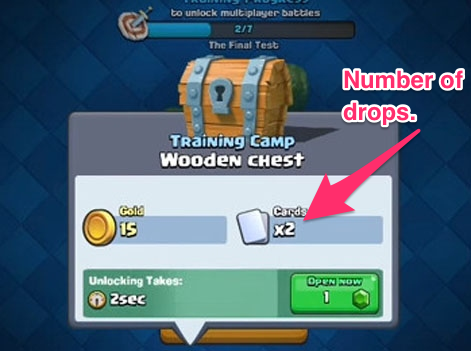
Keep in mind that a drop does not mean a chest. A Chest has multiple drops in the case of Clash Royale, but a chest in Brawl Stars only contains a single drop. Also, not all drops are alike — a drop from a legendary chest in Clash Royale is not the same as a drop in a wooden chest — since the legendary chest has different probabilities for selecting higher value items. But when roughly measuring the depth of a gacha — you can ignore (average out) the “quality” of a drop.
Drops are important because the ultimate goal in free to play games is to maximise long-term retention and maximise the cap of the economy. To drive strong long-term retention, players need to have a long lasting sustained desire to pull from the Gacha. The more drops this takes, the longer the system will last.
The more drops a gacha can sustain, the more generous a game can be, the higher revenue per player, and the higher the long term retention would likely be.
On this metric, Clash Royale’s system dominates Brawl Stars, comparing their soft launch states. Designers usually have 3 key variables to maximise Depth: Content, Duplicate mechanics and Pacing. In all 3 of these cases, Clash Royale’s systems outperform Brawl Stars.
Problem #1: Content
Content is usually the easiest problem to point to with a shallow gacha system. Brawl Stars has 15 characters (for now) whereas Clash Royale had 42 at their soft launch.
What this gave Clash Royale was a longer period of time in which players were likely to get new content, as well as the ability to control the pacing of the introduction of this content. With 42 cards at launch, Clash Royale was able to pace the pool over time using Arena tiers. So players knew they needed to play for awhile before they could even gain access to some of the upper tier cards.
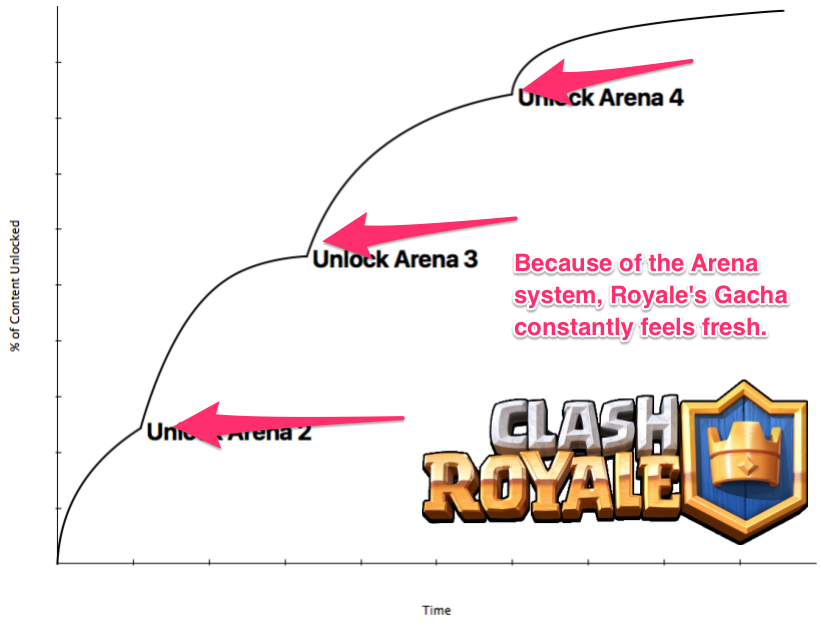
On top of this, because they were able to launch with this much content, each interaction with the gacha system felt novel and interesting, especially between arena tiers. So playing through arena 1, each time you opened up a gacha chest you typically got new cards. Each time you levelled up to a new tier, you were introduced to a whole new set of cards, all of a sudden the gacha got way more exciting to open (even inciting purchases like the limited offer for each tier!).
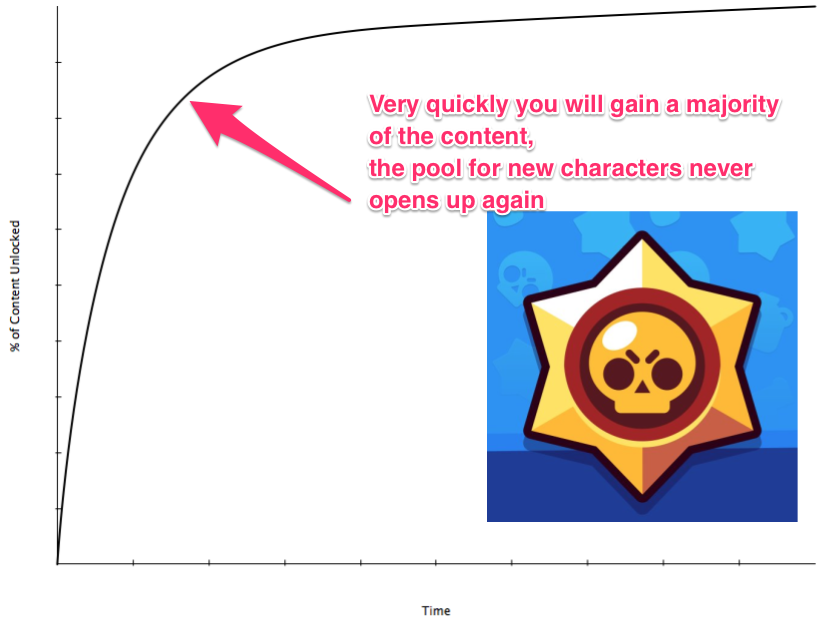
For Brawl Stars, with 15 characters, all available in the gacha from the beginning, with only a few as legendary, this leaves Supercell in an inflexible position. They need to keep all 15 in the pool from the beginning, otherwise, players will get duplicates too fast from the gacha. By only having a few legendaries, the path to complete the gacha feels fast. As a paying player of Brawl Stars, I’ve dropped a small amount of money, but already feel like I’ve unlocked a majority of the content that the game has to offer.
With more content, Brawl Stars would have considerably better control over the player experience and make it last far longer.
For Supercell to correct this problem it may not come in the form of new characters. Brawl Stars gameplay is not the same as Clash Royale. Clash Royale’s core gameplay supports and pushes players to have a collection of cards, especially since each battle requires 8 cards chosen. Brawl Stars only asks the player to choose 1 character. If they add too many characters, this may lead to players losing the desire to collect them all. Having too many characters can lead to players just choosing one they like and ignoring the rest. Brawl Stars will need to find new ways of dropping desirable content, and it may not be in the form of characters. Content can come in the form of special abilities, perks, equipable weapons, customizations, which each could add considerable depth to the progression system, and drive players to upgrade more than just their favourite character.
Problem #2: Duplicates
Content typically isn’t a terminal problem on its own. Content is simply the base in which the gacha total drops has to work with. If content were the only thing that was important, Hearthstone’s 1,000+ card collection would dominate over Clash Royale, but this isn’t the case. The fact is that Clash Royale got away with significantly less content than Hearthstone at its launch because of its duplicate system.
Even with a smaller set of content, a strong mechanic for handling duplicates can make a gacha mechanic last.
The most terminal problem that was introduced with Brawl Stars was the mechanic for handling duplicates.
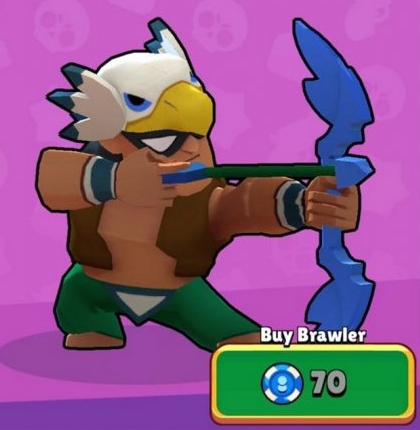
In Brawl Stars, getting a duplicate character in the gacha meant that you were instead rewarded with a single blue chip. This mechanic is similar to Hearthstone, where you can exchange duplicate cards for a small amount of dust. Players can exchange the blue chips in for unlocking characters, although the number of blue chips necessary to unlock many of the rare characters is insane.
As a result, each time I have purchased gacha packs from Brawl Stars I’ve felt completely regretful. After I unlocked a majority of the characters, each chest has a high probability of dropping a single blue chip over unlocking a new character or gaining some elixir (the currency necessary to upgrade your characters). Having a string of gacha packs that just give out blue chips, especially if you’ve unlocked all the content, would surely cause many players to churn.
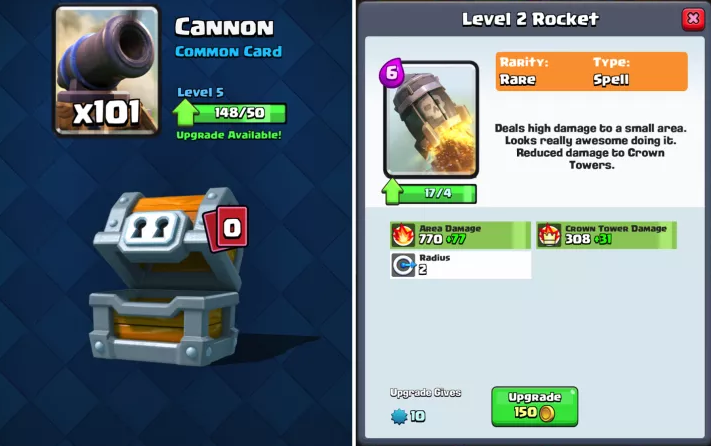
Clash Royale doesn’t have this problem because it drives significant value from its duplicates. Duplicate cards are necessary to upgrade the card. Getting a single card unlocks the card for use, but to have the fully upgraded version of the card, you need duplicates of it.
This is what makes Clash Royale’s Gacha system last. Thinking in terms of the number of drops, even with a base amount of content of 42 cards, requiring each card duplicate to be found hundreds of times (depending on rarity) exponentially increases the number of drops necessary to reach the end of the economy.
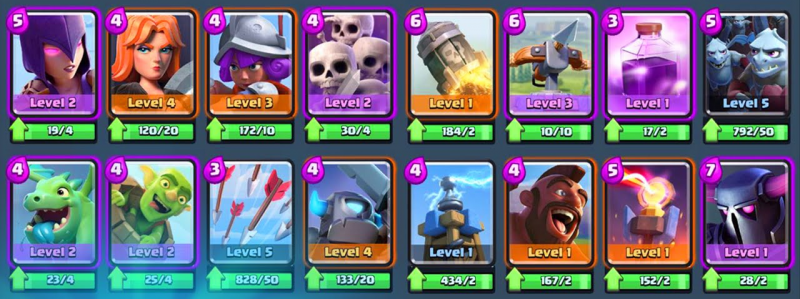
Even thinking about maximising a single legendary card can show you that it takes a lot of drops. It’s reported that Supercell drops 1 legendary card 0.43% of the time in their gold level chests. If we use this as a base, and a pool of 6 legendary cards, that leaves the % of dropping your chosen legendary to be 0.0716%. In order to upgrade this card fully, you need 37 drops of this card. So, on average, a player will need over 50,000 drops before their single legendary card is fully upgraded. That’s a system that LASTS.
So for Brawl Stars to utilise its minimal content better, it needs to think about duplicate mechanics similar to Clash Royale. Potentially duplicates increase the max upgrade level of a character. Potentially duplicates unlock new special abilities. Without it, players will simply lose interest in the gacha, or feel as though the high price tag to purchase chests are just not worth it.
Problem #3: Pacing
With gacha systems, designers have one final variable to control how long their gacha lasts: pacing.
Not all gacha systems support a huge amount of drops, but to counteract this, increase the time it takes for a player to get another drop from the gacha. For pacing, game designers typically have a couple methods to use:
- Pace how often the players can open the gacha
- Pace how many drops the gacha gives
Clash Royale gives a lot of drops daily. With free chests, crown chests, clan chests, and regular chests, each day players can get plenty of free drops to feel progress. This is mostly because Clash Royale’s duplicate system multiplied by their high amount of content supports such a high amount of drops.

With Brawl Stars, because of the low level of content and the fact that duplicates aren’t necessary, this left Supercell designers in a bind. They had to pace their gacha significantly slower. They did this by tying chests to coins, and by making chests only give 1 drop each. Comparing this to the experience of opening a chest in Clash Royale, Brawl Star’s gacha boxes are far less rewarding. The reward pops up, you get a single currency of something, and then you’re left feeling — “That’s it?”. This problem is magnified when each drop can be amazing or terrible feeling. If I get a new character or some elixir — this feels good. If I get a blue chip… I feel like all the time I put into collecting coins for that box was worthless.
Clash Royale’s chests on the other end can guarantee rare or legendary cards, and even if I get a duplicate, it still feels beneficial. So even as I reach the mid-game and end-game where I have a majority of the content, every time I open a gacha I feel like I’m making progress, and I have a chance for big gains.
Supercell had pace Brawl Stars chests this harshly because their economy only supports a certain amount of drops. If they increase the number of drops a chest will give, this will mean they either need to increase the pacing (increase the cost in coins to purchase a chest) or they will be allowing players to speed through content significantly faster — something they can’t afford with the low amount of content they have so far.
The Path Forward
Supercell’s Brawl Stars is an amazingly fun game to play. As the community has shown, there is a huge desire to play an action-based MOBA on mobile, and clearly, Supercell has capitalised on this with Brawl Stars. This game has a strong chance of succeeding simply based on its rabid community building around its multiplayer core gameplay.
But as we know in free to play, a strong core gameplay is only the first step towards success. For Brawl Stars to become a Supercell-sized success, it’s about how long their systems last.
Improvements could come with more content, it could come from better pacing of the gacha, but driving more sustainable drops likely will need to come from a better mechanic for duplicates to avoid a content treadmill. Taking a page from Clash Royale’s system and finding a way to make duplicates a key part of reaching the end of content for its gacha mechanics. Doing so will exponentially increase the lifetime of their gacha systems, plus drive stronger retention and monetization from their user base.
Brawl Stars has the DNA of the next Supercell hit. They may just need to make some last minute adjustments to make it the next billion dollar game. I’ll be cheering for them.
3 Tips for Better Pacing
Free to play on mobile is changing quickly every day. The audience is maturing. Their tastes are changing, and now I feel is just the calm before the storm. The stasis that exists on the top of the AppStore can only hold for so long, the mobile audience’s tastes will change, it’s now up to designers to find out how.
As our audience’s tastes change, we as designers have to adapt our designs. We have to find new ways of making old systems feel new again.
Today I’d like to talk about pacing mechanics, and how we can adjust our current pacing mechanics to make them feel better for our maturing audience. Pacing mechanics usually take the form of Timers or Energy systems, and are always ingrained deeply into the core loop of any Free to Play game. Pacing is what prevents players from burning out on content or mechanics. Pacing is what drives habits. Getting pacing right is the key to driving strong long term retention. And long term retention is the key metric for a successful free to play game. But making these pacing mechanics not feel artificial is difficult.
So I’ve put together 3 tips that I like to use when “Re-dressing” pacing mechanics. These 3 pacing tactics can help you rethink how to build a pacing structure so that it feels new, different and more natural to the player.
#1: Add Natural Pacing: Days, Weeks, Months
Sometimes in a game design, you need to add longer timers which prevent players from engaging too much with a feature during a single day. Many free to play games aim for longer timers for this: 4 hours, 8 hours or even 12 hours. In my experience this can feel very restricting.
Instead, ask yourself, can I pace this using a daily, weekly or monthly cycle instead?
So instead of a feature which is available “once per 8 hours”, opting for a pacing feature that is “once per day”. These will allow the player to be more flexible about how they structure the use of the feature, and it feels more natural because they are using their ingrained day/night cycle. It’s easier for a player to commit to coming back to the game once per day than it is to come back in exactly 8 hours. As a result you can pace the players stronger (once per day is longer than once every 8 hours) while it actually feeling better for the player.
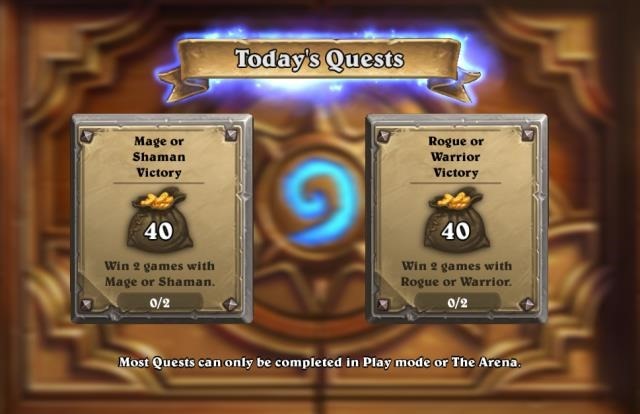
Hearthstone (which we’ve covered many times before) is a great example of this. Their mission system employs daily pacing. Instead of using timers, they pace the missions so that there is 1 new mission per day, up to a maximum of 3.
So coming back at any time the next day, you know you will get an additional mission. This is the easiest source of free coins in the game, so it feels rewarding and is tied into the core loop of purchasing card packs. But the key here is the daily pacing. There’s no timers telling the player that in exactly x hours they need to return to the game, instead they have the flexibility of natural day cycles. Have I done my mission of the day?
Days aren’t the only cycle that you can use. Weeks and Months work great at pacing players for very long timers. Hearthstone paces players by month in seasonal competitions. Because each month has a unique card back, this makes it an easy choice for a player to come back to the game, especially near the end of the month, just to get their card back.
#2 Add Animations
Another clever way to add pacing is just to use visual animations rather than timers.
For example, Hay Day had a clever mechanic in which the trader characters delay taking new deals until they’ve left and returned to your farm. After completing a deal, the character would slowly walk/drive away happy, then return soon in the future ready for another trade. This made the pacing make sense, and didn’t need a timer in the player’s face.
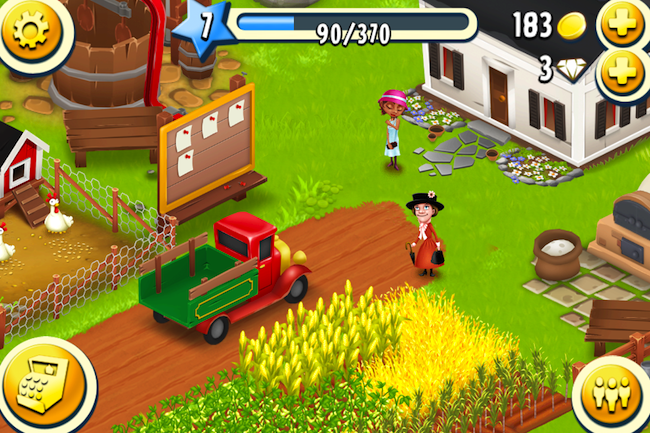
Want the next deal? Wait until the trader walks back!
Games with a large world map which you have to send armies around commonly employ a pacing mechanic where the army must take x hours before they reach the location. Showing the scale of the world relative to the unit and actually animating the units along the map helps players buy in to the fact that it takes time for units to reach locations.
Is there any shorter timers within your game that can be visualized by an animation instead of by a timer? Is there any long timer which you can better visualize to the player through animations?
#3 Get Creative with the Cost
The best strategy for making pacing feel better is to get more creative with your economies & systems. Instead of demanding the player to wait for hours for a building to construct, increase the difficulty & cost of building it to begin with.
Most systems force pacing through timers that look like this:
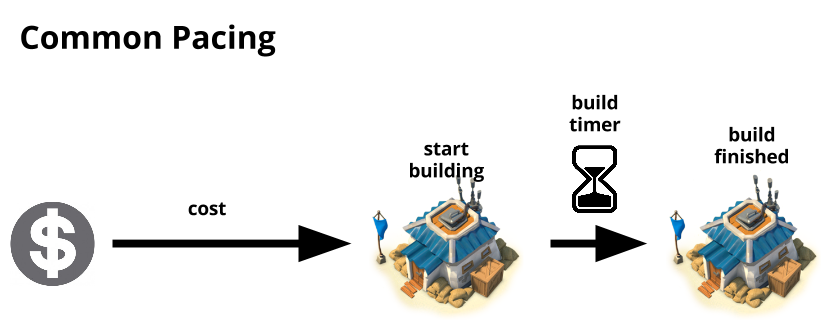
Fallout Shelter is the best recent example of a game focused on adjusting pacing to feel different and stand out. They chose to do this by shifting the economy. Instead of the pacing of the game through timers for building construction, they’ve focused their pacing only through the initial cost of the building. As a result, Fallout Shelter feels different from most simulation games. It feels instantly gratifying and very rewarding for collecting the coins.
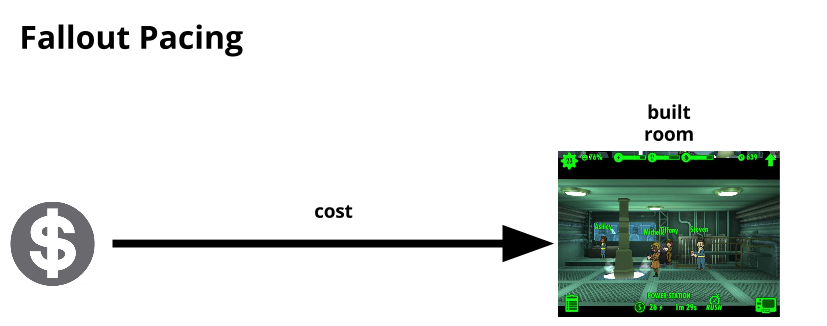
Due to this change, Fallout must increase the cost rapidly to compensate for the lost pacing with building construction and find other timers in the game for players to manage & drive sessions (in this case Wasteland Missions). In the end, this works out for Fallout Shelter, and feels like a very different simulation game from most free to play games.
But increasing the cost before the purchase can take many forms. Cost can come in the form of just collecting currency (ex. bottle caps in Fallout Shelter), or it can be a combination of luck and effort as seen in many gatcha games including Contest of Champions. To pace getting the getting the best heroes, players must grind through collecting hundreds of crystals.
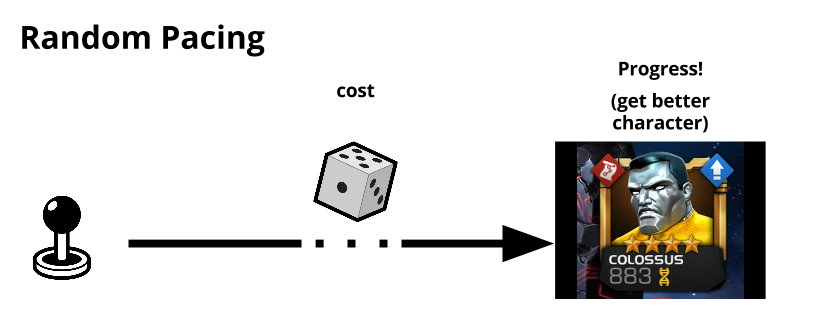
When designing a new pacing mechanic, consider the following:
Instead of guaranteeing the player the reward at the end of a long game loop, try allowing them to engage in a shorter loop, but randomize the progress towards the goal. As psychology teaches us, this type of mechanic will pull players back longer than a strict cost:reward trade off.
There are many more ways to get creative with pacing. But I would always rethink just adding a timer or just adding a high cost to an action if there are ways to make pacing more engaging to the player.
The Bare Minimum : Timers should make sense
If all the above fail, then the bare minimum for having a timer is to make sure that it makes sense with the theme.
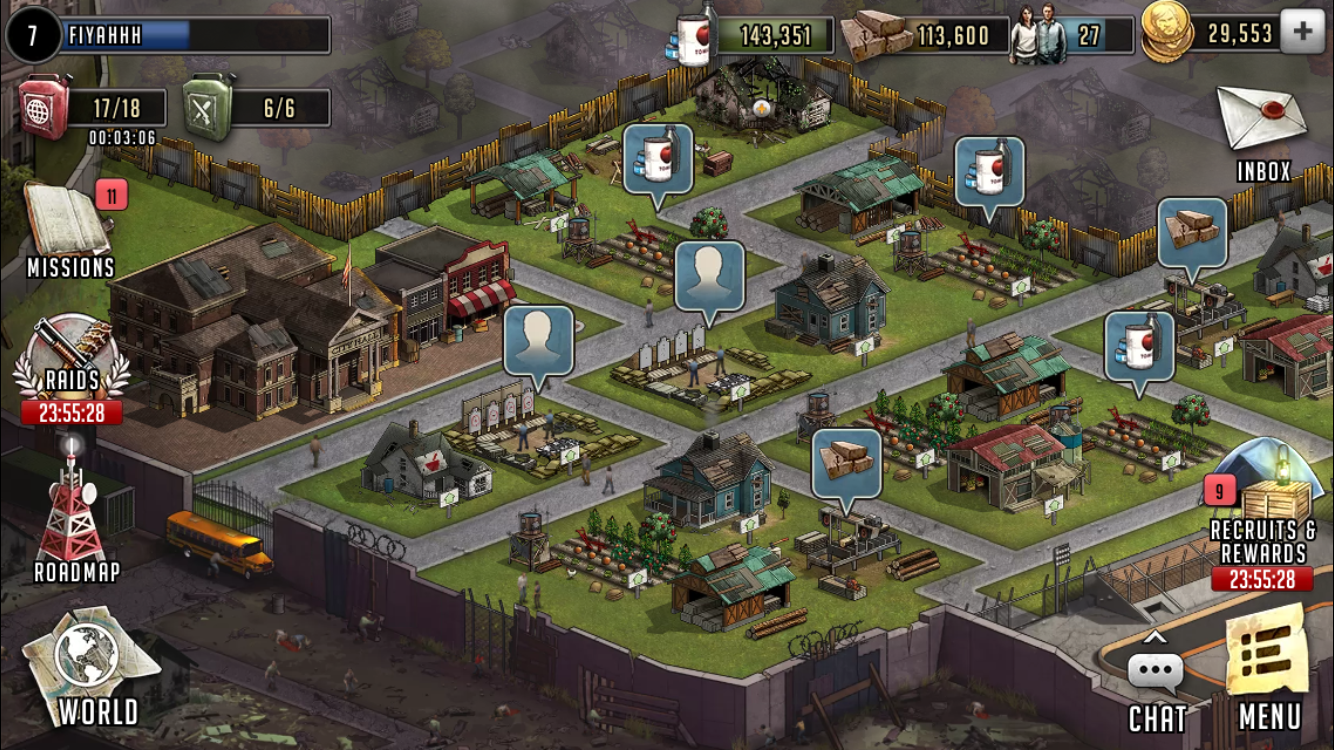
Why do all F2P games have building construction? because building timers is one of the few places where timers make sense.
This is mainly why so many games default to have a city building component, even if it’s a bit of a stretch for the concept. Take Walking Dead: Road to Survival, the F2P game from Scopely recently released. They clearly added the city building component for the ability to pace using construction timers. If they hadn’t had this component, they would have really struggled to find places that make sense to add long timers.
Agent Alice is a good example of a game that struggled with timer design.
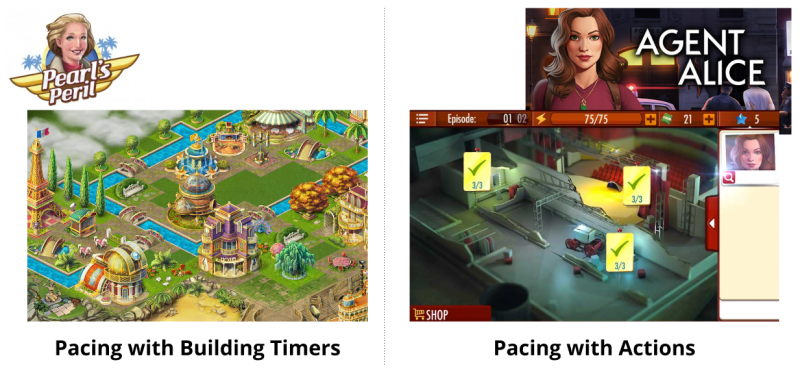
Agent Alice is a recent Hidden Object game from Wooga. Agent Alice made a big risk by removing the city building component from Pearl’s Peril, it’s spiritual predecessor. Due to this design decision, the game struggled to find effective timer design.
Where Pearl’s Peril would use building timers to pace players, instead Agent Alice had to use more arbitrary timers. The timers became different actions that Agent Alice had to take to pace the story. In the example screenshot below, Alice must plan her next move which takes a long timer.
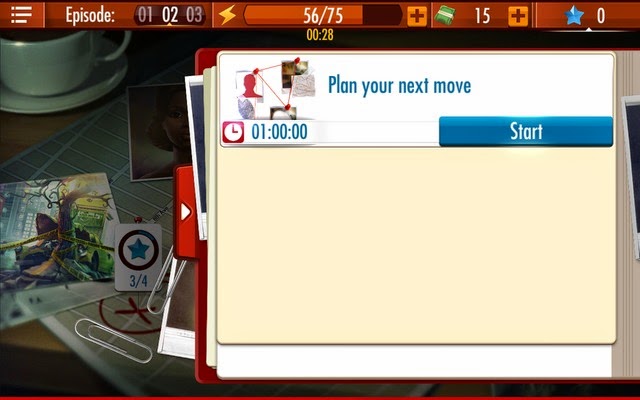
Agent Alice’s timers many times felt unexpected.
This timer is not expected by the player.
The goal of timers has to be to fit into the theme of the game. Each use of a timer leave the player feeling: “Right — that makes sense that it takes that long”.
In another hidden object example, Criminal Case, a game from Pretty Simple, uses a timer when the player has to send anything “to the lab”. This makes sense. In all the crime shows I’ve watched, this was expected by the detectives and the audience.
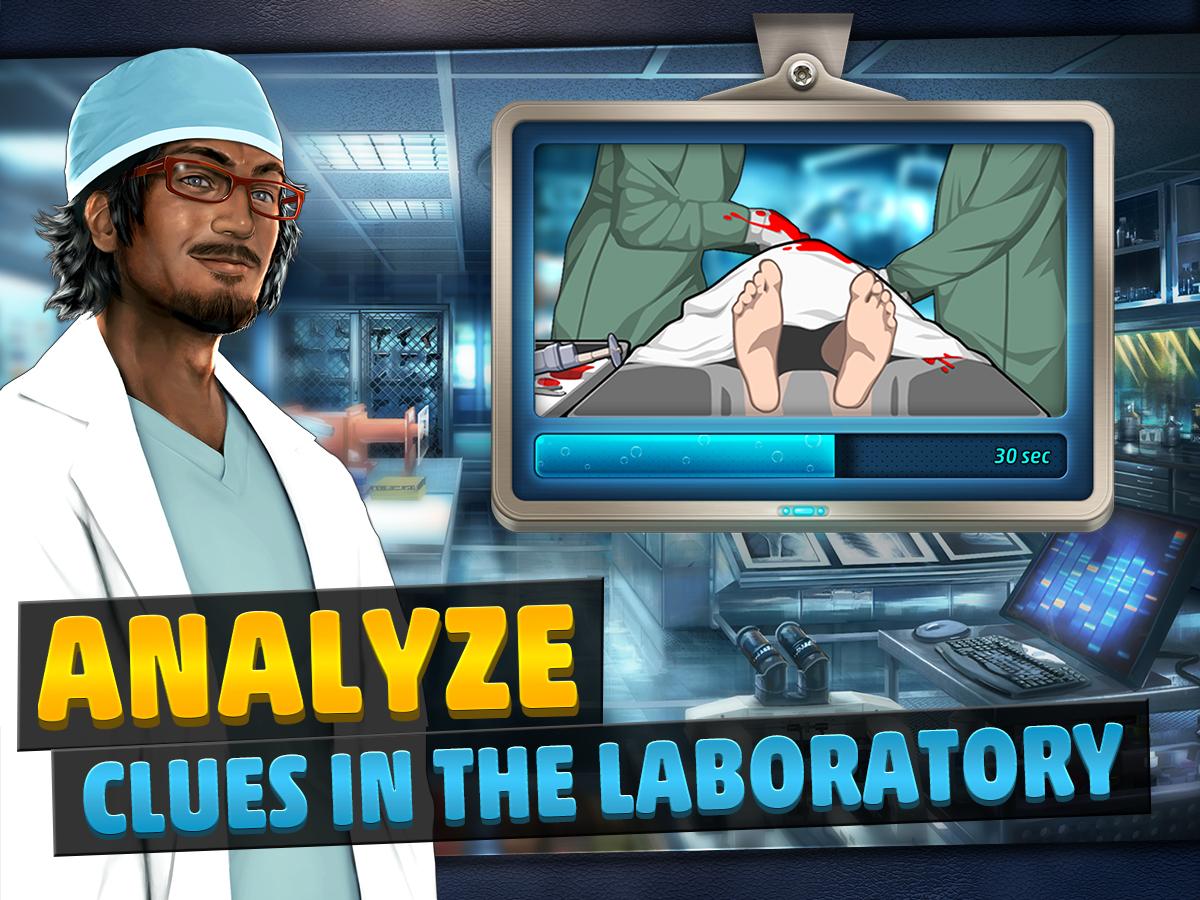
Sending evidence to the lab makes sense why it takes time.
Keep this in mind when designing your pacing structures. Timers have to make sense in the theme, they have to be expected by the player.
Summing Up
Pacing mechanics can be tough to get right. But slapping timers on every system isn’t the right direction, especially as our audience matures and becomes more sensitive to the mechanics. 3 ways which you can improve pacing mechanics to feel different are:
- Swapping Timers for Natural Pacing : Once per day, Once per week, Once per month. Use the natural cycles we’ve all been accustomed to.
- Use animations instead of a timer to make it feel natural & make sense
- Instead of directly using timers or an energy system, look to find ways to pace by increasing initial cost through currencies, gameplay and luck
And if none of the above is possible, do whatever you can to ensure the pacing actually makes logical sense in the game loop. Building takes time, sending heroes on a journey takes time. These can have timers. Don’t add timers to actions that don’t make narrative sense why they would take time.
Using these tips you can adjust your design to feel less restrictive, more natural, and ultimately serve this maturing audience.
Understanding Energy Systems
Energy seems to be hated by designers and players alike, so why does it endure as the hallmark of casual F2P games? The fact is that whilst it’s a crude mechanic, it’s also an efficient one, delivering several functions in one easily implementable feature.
This isn’t a defence of energy systems – I’ll follow up with a post on ways of replacing them – but without something fulfilling these roles then it’s unlikely you’ll make a very good game. I’ll talk about energy and timers fairly interchangeably here as they are both pacing systems that function remarkably similarly.
The four main reasons that mobile designers use energy systems are:
- Habituation
- Content pacing
- Monetization
- Strategic choices
Habituation
The primary reason that designers use energy systems is to encourage players to play as long and as frequently as they would like. The amount of energy gives an easy way to fix the length of the play session, whilst the energy refill rate determines the play frequency. Energy systems do this by providing the player with closure – the feeling that they have done everything they need to in a game, and that when they return there will be new, fun stuff to do.
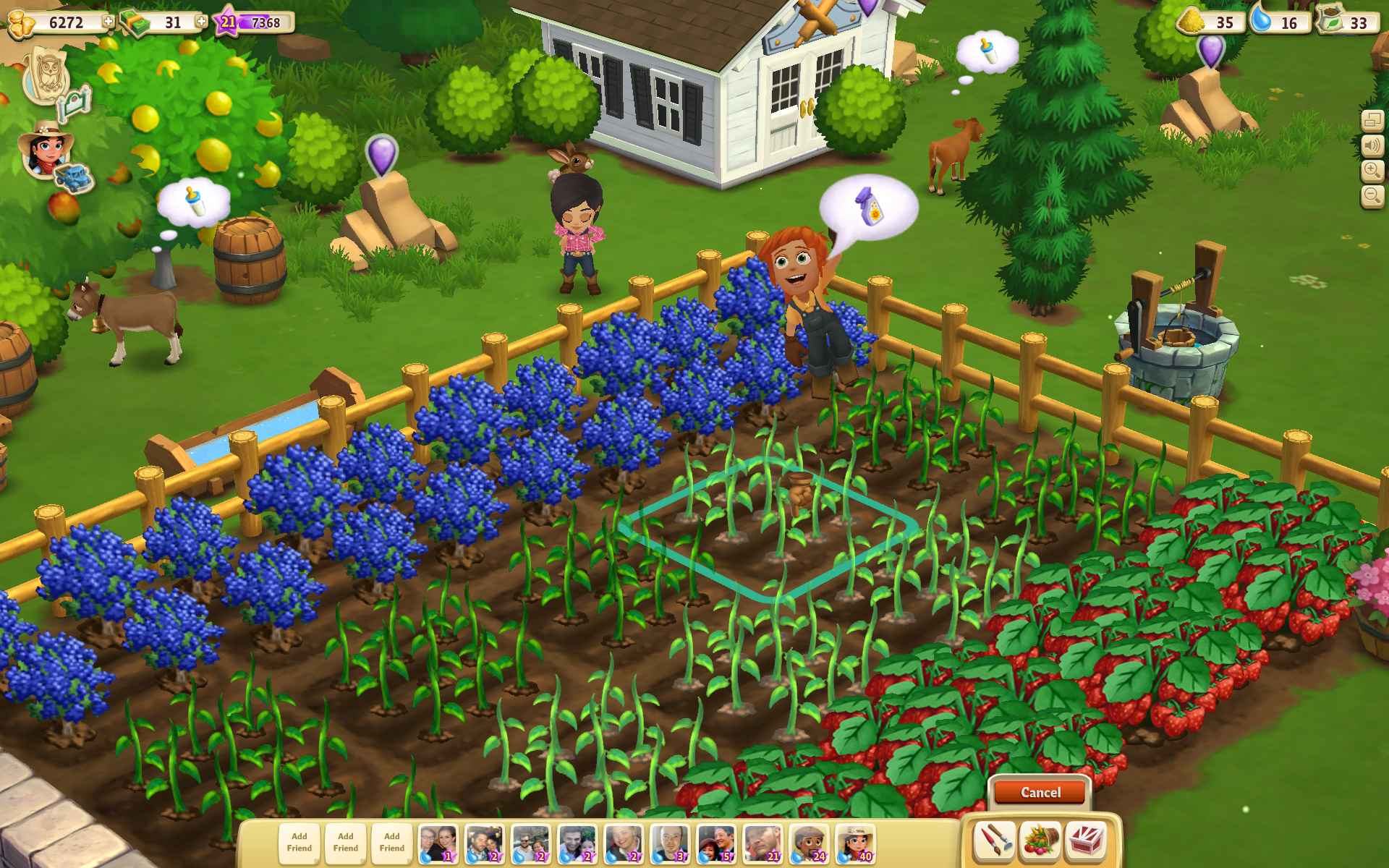
This is why crop and resource production timers work so well. Players coming back to the game harvest all the crops that have grown whilst they are away – a hugely positive experience. Then they can use the crops to complete deals, craft things and improve their farm. Finally they plant their crops so ready for their next session. As they leave the game there is nothing more for them to do in their farm, so it feels like a natural point to stop playing; but they also know that when they return they can get the satisfaction of harvesting their crops again.
Designers need to be able to control session length and frequency because it allows them to integrate their game into their players’ daily routine. Any activity that becomes part of your daily routine is likely to be something that you keep doing a lot longer than you otherwise might, and long term retention is highly correlated to lifetime value.
Think of the game as chocolate. If you had unlimited chocolate (and limited willpower) you might binge on it to the point you were sick of it. At this point you wouldn’t want to eat chocolate again for a while. Imagine if you got a small piece of chocolate every afternoon with your coffee break though. Now the chocolate enhances your coffee break, but at the same time, you never have enough in one go to get sick of it. Instead you look forward to the chocolate enhanced coffee break, and would miss it if it was taken away from you. As with chocolate, so goes gaming.
Content pacing
The second main reason that designers use energy systems is to pace their content, and to ensure that players consume content at roughly the same rate. Once players have run out of new content to experience, they usually have little interest in a game. It is vital therefore, to ensure that players are not consuming content faster than you can produce it.
Energy systems are crucial to minimising inequality in game economies; they ensure that players all consume content at roughly the same rate
PvP games often have an advantage here because their players effectively produce content for each other to consume. In Clash of Clans, each player’s layout of their base is unique and interesting for other players to attack. But Clash of Clans still needs to bring out new units, upgrade levels and features on a regular basis to keep their most engaged players.
Energy systems also help to reduce the “distribution of wealth” in games that exists between highly engaged and less engaged users. By capping the rate that the most engaged players can play, they cannot get too far ahead of the less engaged players. This is important for balancing, as a game should remain interesting for both types of players, and setting a progression rate that is interesting for the slowest players and yet doesn’t allow the fastest players to run out of content can otherwise be a challenge.
Monetization
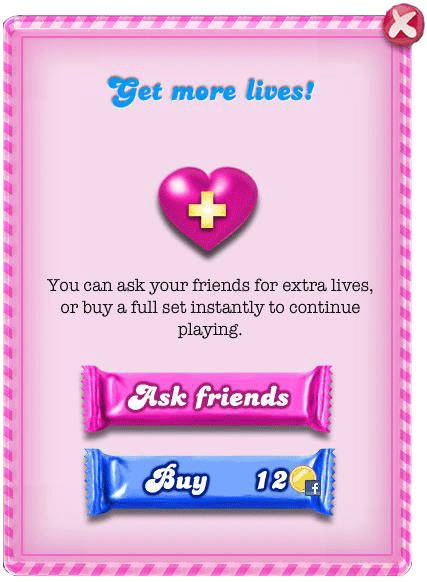
Making money is the third reason that designers use energy systems. In casual games energy might typically represent a third of bookings. This is not insignificant, but there are better ways to make money out of games, and monetization alone is a poor reason to go with an energy system. Energy doesn’t typically make for a very exciting or satisfying purchase, as it gives players something that they could get if they waited a bit longer. Most mobile designers realise this and despite the perception of energy systems as a cynical way to extort players, it is rare to see them if they are not needed for habituation and content pacing as well.
Strategic choices
In some games energy systems also provide the player with a strategic choice that they need to make. This comes from having a limited number of energy points to spend each session, and a greater number of possible actions. Players must decide what to spend their energy on, and because of this they usually need to set themselves a longer term goal that they are working towards over several sessions.
For example, in Clash of Clans, because I can only upgrade 2 or 3 buildings at a time, and each one might take anywhere from a few minutes to a few days, I need to work out what I prioritise. Do I upgrade my resource generating buildings first to facilitate further upgrades, my storage space allowing me to raid more, or my defensive buildings to protect what I’ve got? In prioritising my current session, I also create a mid term plan for my future sessions as well, which builds off this. In games where the energy system doesn’t allow the player any real choice in what they do, the system typically feels even more arbitrary and restrictive.
Conclusion
The reason that F2P designers use energy systems is not because they hate players, it’s because energy systems are efficient mechanics to encourage specific play patterns, pace content, monetize a game and provide a player with strategic choices. Designers should be wary of releasing any game without features that cover all these bases one way or another.
Content Hunger: How to avoid the content mill in gaming
Games are content, and so the economics of games are largely the economics of content. Content is what players pay for, and content is what takes time and money to build, with both the quality and amount of content increasing production costs. I’ve been playing a lot of Dragon Age: Inquisition recently, and having a great time. I’ve already sunk just over 20 hours into it, and if friends and reviews are to be believed, I have at least another 30 to go before I finish the main storyline.

Dragon Age Inquisition has a huge amount of high quality content to explore
The world you can explore is vast, filled with scripted missions, side quests, wild beasts, roaming bandits and hidden secrets. Romping across the landscape from rocky deserts to dank marshes I am both awestruck at the variety and volume of content in the game, and slightly sickened by it. Sickened, because now I work in the industry I know how much time will have been invested into producing everything I see, and how countless days must have been put into dark corridors, rock formations and other mundane details that give the world authenticity, but will be largely forgotten and ignored by players.
Mobile is some way behind the production values of consoles. Partly the hardware isn’t as good yet, and so cannot support such high end graphics. Partly developers have not needed to deliver such high quality games to win customers. But mobile is rapidly catching up, and whilst the quality of content may not be as high, the amount of content needed is already probably larger. The F2P business model dominates mobile, and success here is highly dependent on retaining your players for months or even years. Having something for players to do a year after they start playing your game is no mean feat. Wooga’s hidden object game Pearl’s Peril has 90 weeks of content – something that few if any console games can match, and as a result of this the retention in the game is phenomenal.
Content is a key competitive angle
It’s clear on both console and mobile that the amount of content you can deliver, and its quality are key factors for success. It’s hard to imagine an RPG without the amount and quality of content that Skyrim or Dragon Age has being a success. For a competitive HOG you need to deliver a similar amount of content as in Pearl’s Peril – something that only one or two developers apart from Wooga can hope to do. One of the reasons that World of Warcraft has become so entrenched is the amount of content that it has built up over the past decade is now almost impossible for other MMOs to replicate.
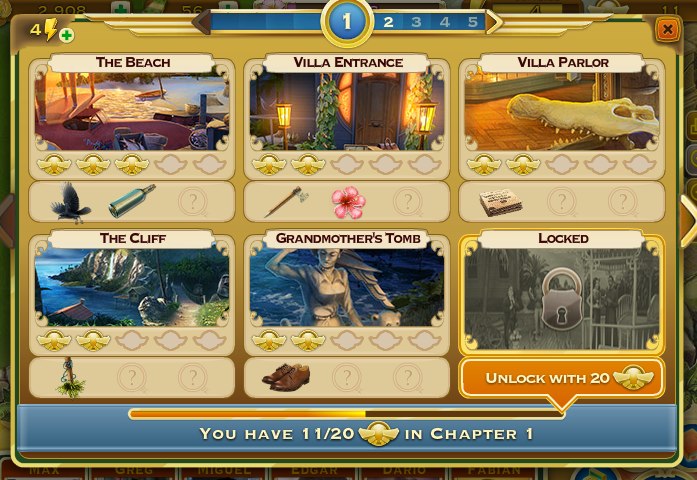
Pearl’s Peril has 90 weeks of content, each with 5 hidden object scenes and a point-and-click adventure scene
For many games the number of man-hours that have been put into content determines the production quality and amount, together with the efficiency that this time is converted into content, given the tools utilized. The older a genre is, the higher the production values are – by pushing the content bar ever higher, developers shut out competition and establish themselves in franchises for the long term. With each game developers up the stakes, both because they can due to improving tools and existing assets to start from, and because they must to continue attracting players.
Maximizing content
To be successful developers must therefore invest in their tools and production pipeline to match the incumbents in the genre they are going head-to-head with. Failure to do this sort of preparation can only result in failure. Indies and smaller developers that cannot match the content output of bigger companies must innovate on the gameplay mechanics more to succeed. By innovating they can produce a new experience that players will not directly compare with established games. No one compares Realm of the Mad God to World of Warcraft, or Faster than Light to Mass Effect. There are also a number of techniques that can be used to stretch content for as long as possible, and all developers, regardless of their content output are wise to use as many of these as possible.
Randomness: Games with randomness are far more playable than those without some element of randomness. In Candy Crush Saga, levels are different each time they are played due to the random way that gems drop into the board. Players replay levels effectively waiting for the right combination of gems to drop. Imagine the game without this randomness and each level has a solution that can be found by trial and error relatively quickly, and the levels become boring.
Alternative choices: Allowing players to customize their play experience in different ways allows them to go back and replay the same content to explore how their decisions influenced the game. Whilst this requires some additional content that not all players may see, it allows die hard fans to play through most of the same content several times with minor variations. A good example here is how Telltale games allow you to replay episodes making different decisions each time. These decisions allow you see how the other characters react and the story pans out. In Dishonored the skills you upgrade give you different ways to complete each level, and the amount of violence that you employ throughout the game affects the way the story pans out to give replayability significant appeal.
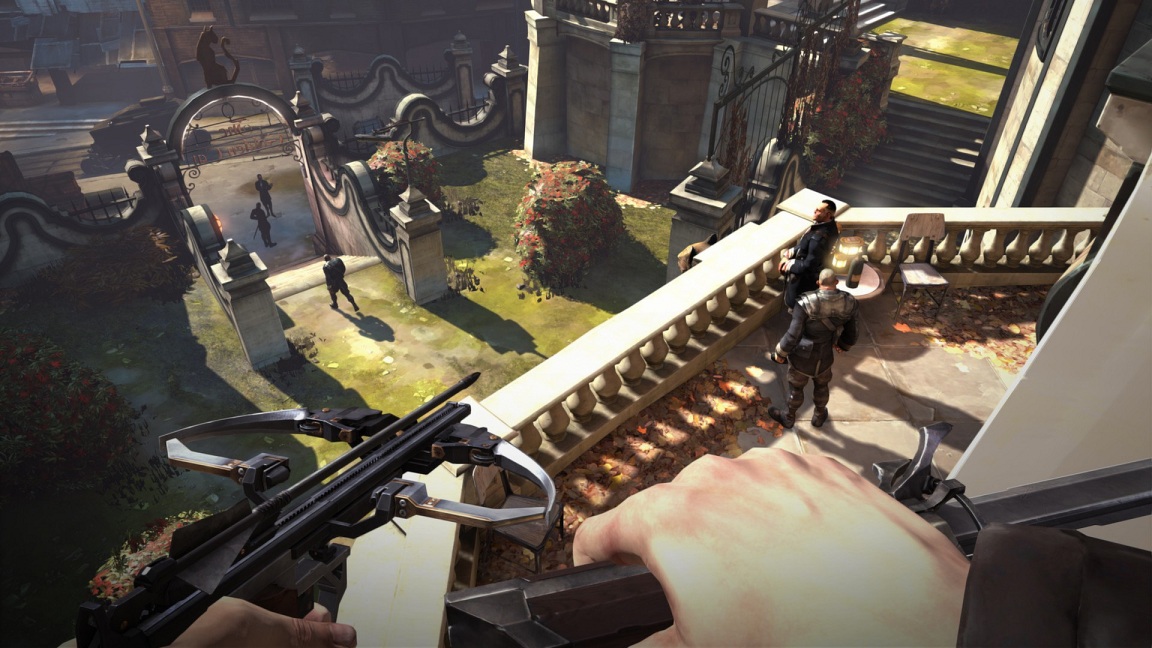
The way you play Dishonored affects how characters interact with you, the overall ending and even the weather in levels.
Events: Most successful mobile games run timed events of some form. Often the mechanics of the event are very similar, but the appearance of exclusive content that is only available for a limited period engages players extremely well. For the chance of getting a new unit, building or item players will happily grind through a lot of content that they have already seen before, and the most active players will often only be playing for the events schedule, having already exhausted the other content in the game.
Difficulty levels: In games where the difficulty of levels can be increased, then replaying the same content is fun because it requires players to master a higher skill threshold than before to complete. Changes in difficulty can often be made with config changes that are cheap to implement, and the players will still enjoy the content. Guitar Hero or Rock Band use this mechanic to allow you to replay the same tracks again and again at a level that is always challenging.
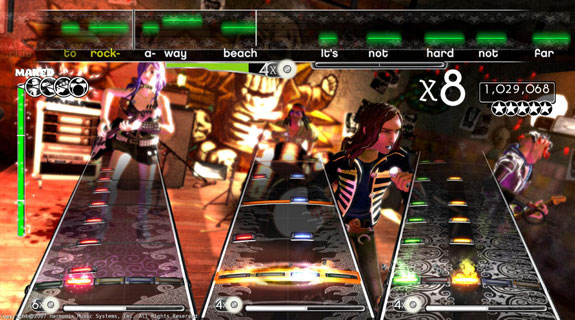
Rock Band lets you play through the same songs at several different difficulty levels
User Generated Content: In Clash of Clans, players spend most of their time attacking the bases of other players. As the layout of each base is set by the defending player then an incredible amount of variation is generated by the players. All Supercell needed to do was to give players the tools reason to vary their base layout and the players take care of the rest. Different bases require different tactics to attack and so even though additional buildings and units are released only very slowly, players stay engaged in the game.
Conclusion
In any genre, games compete on the amount of content offered and its quality, both of which drive up the cost of production. It is important to recognize the demands of producing this content before starting production and only choose genres where you can compete. Having chosen a genre it is vital that developers build the tools and pipeline to deliver the required content, as well stretch the playtime from their content however possible.
Social Gaming: Facebook, Guilds and Beyond
Facebook has had a big impact on games. Before Facebook, video games were seen as an antisocial activity for spotty boys hiding in their bedrooms. Together with the ubiquitous usage of smart phones and Nintendo’s family marketing of the Wii, the perception of both the gender bias and social nature of video games is gradually shifting.
In fact, arcade games originally followed the distribution of pinball machines in bars where adults would socialize, before spreading to family friendly venues such as cinemas and malls. Reacting to a dire recession in the early 80s Nintendo decided to focus its marketing of consoles as toys for boys, rather than entertainment for all, and in doing so set the popular view of video games for the next 30 years.
Now, finally, the industry is beginning to come full circle, and it’s the social aspect that I want to focus on here. It was on Facebook that the term “social games” was coined. Of course, games were social before, whether you were playing Mario Kart with your friends or raiding with your guild in World of Warcraft. But now, even as Facebook is steadily replaced by mobile as the new platform for gaming, everyone is still talking about social.
It’s not hard to understand why. Kongregate spoke convincingly at GDC 2013 on the importance of social features, and particularly guilds. Their talk highlighted the dramatic ways that guilds can improve retention, engagement and monetization. A few facts summarized from their presentation:
- Every one of their top 10 games has some form of guild structure
- Dawn of the Dragons (5th Planet Games): conversion rate for non guild members: 3.2% vs. guild members: 23%
- Tyrant Unleashed (Synapse Games): ARPU for non guild members: $36.59, vs. guild members: $91.60
But guilds are only one part of “social”, just as Facebook and your real life friends are. Humans are social beings, but their social interaction can take many different forms depending on the context. There is not a one-size-fits-all solution to social in games, and each game must work out what is appropriate for its own audience and mechanics (and the same is true if you are building an app). I believe that the nature of social interactions depends on whether your game is really about your Friends, the Mechanics, or the Content.
Friends
When you play a game with your real life or Facebook friends, things work best when the experience is about your friends, and not about the game. Playing with people is a great way of strengthening your relationships with them. Games are appropriate for the majority of family gatherings, whether it’s Risk or Charades.
For the experience to work out well for everyone, then the game needs to be right. The game should facilitate building relationships, and act as a backdrop to this, rather than be the main event. Games of low skill typically work best as they allow participants of all ages and abilities.
This is why games like Draw Something and QuizUp work so well, and more complicated simulation games have quickly fallen out of favour on Facebook. In the former, the experience is more about your friends, and in the latter it is more about the game. Real life friends and family are not the way to drive distribution or underpin retention unless your game is about the people you are interacting with. As we all know from the complaints about people’s newsfeeds being spammed, it isn’t that common for our friends to share our taste in games.
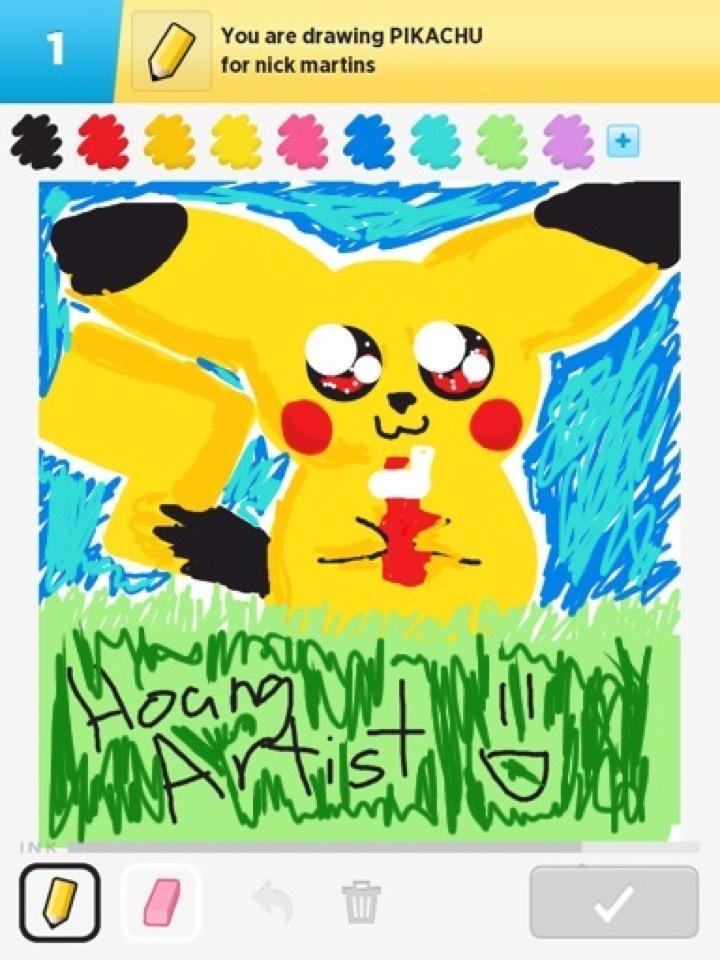
Draw Something.Chibi Pikachu by HoangArtist
Mechanics
In this category I would put everything from people who like playing otherwise family games to a competitive level, to immersive experiences such as World of Warcraft or Clash of Clans. If you are REALLY into bridge then you don’t invite your real friends over and grind them into the floor. You are going to have an unsatisfying time both in terms of the quality of gameplay, and social experience. Instead you either play a friendly match where everyone can enjoy the social aspect, or you join a bridge club and enjoy the gameplay.
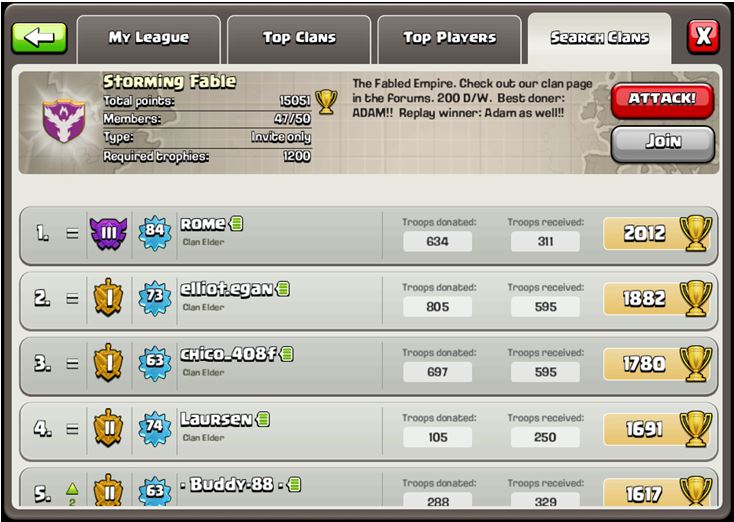
This latter case is still a social experience of course, but it’s unlikely to be one with your immediate friends and family. It’s more appropriate to share it with other people that share your love of bridge. This is exactly what Netflix and Spotify have realized as they’ve shifted their recommendations engines from showing you what your friends like, to what other people like you like. Generally we do not really care what our friends have been watching. But if we enjoyed The Godfather and The Departed, then we are interested in what other people who also liked those films would recommend.
For games that rely on their mechanics, adding in a social layer can have some powerful effects. Initially, players can even be taught how the game works by more experienced players and this knowledge flow continues as players exchange thoughts on more advanced strategies. A social aspect can enrich the gameplay by requiring the coordination of several different players such as in raids in World of Warcraft or Destiny. Finally, as these interactions build new relationships between players, they develop a sense of duty to each other, which leads them to keep coming back even if they tire of the gameplay itself.
For the social layer to add value to players, and by extension developers, it doesn’t need to involve people who are real life friends. It’s much better to group people together by the intensity that they play the game, so that they can engage at the same level as the others in their group. This is exactly what happens in Clash of Clans and many other clan based games, where the top clans demand a certain level of engagement as a requirement for membership. Not that the developers need to worry about this, as given the right tools the players organize themselves.
Content
There is however a third, much rarer way of organizing people. In games where there is a strong narrative and the experience is largely single player and driven by consuming content in a linear manner, it makes more sense to group players by their progress through this content.
This is what happens when people live-tweet TV shows. Using Twitter, viewers can feel part of a larger experience and share in the unfolding drama, regardless of whether they are actually sitting with other people watching the same show. I believe there is an innate human desire to calibrate your social responses, and this fills the same role. It helps people comprehend their own reactions, see if they are appropriate and ensure they understand the situation in full.
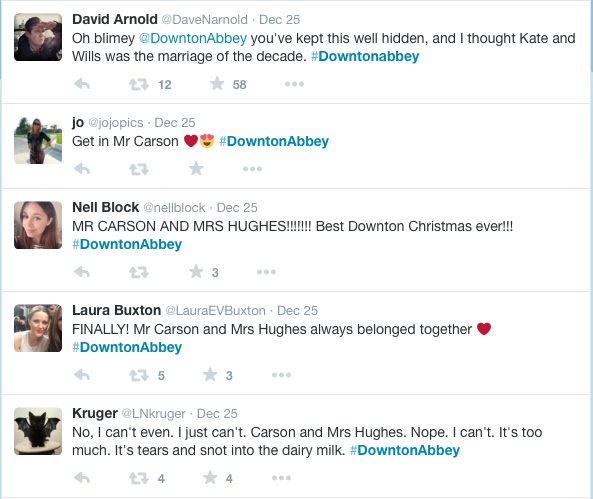
This is the equivalent of catching a stranger’s eye and enjoying a moment of shared understanding – we know it in a diverse set of situations from sharing the frustration of waiting in line to sharing the elation of hearing the opening beats of a favorite song at a gig. The same sort of social experience could enhance games like BioShock and Mass Effect, maximizing the impact of the most dramatic moments. However, most games that would fall into this category do not have any form of social layer, because of two problems.
Firstly, how do we bring together people who are all experiencing the content at different rates and different times? The solution here might lie in something akin to the comments sections on newspaper and magazine articles. Here the comments don’t need to be by people you know, or written whilst you read the article. But they are still relevant to you, because the person commented after they experienced the same content as you just did, and they enrich your experience of the article by providing additional information and opinions.
Secondly, how do we allow people to be social without breaking the immersion of deeply engaging games? The last thing people want after deciding who lives and who dies in The Walking Dead is for the drama of the moment to be shattered by being prompted to see what everyone else did. Luckily TellTale have the good sense to wait until the end of the episode, a natural break point before allowing you to review what everyone else did and connect you to the forums. In free to play games this might in fact be even easier, as the breaks between sessions and timers are natural point to allow people to engage with each other, both savoring recently enjoyed drama and anticipating exciting things to come.
A few games do manage to solve these problems and pull people together in this way, however. Dark Souls 2 allows other players to leave messages as you work your way through the world and narrative. These can either be helpful tips or troll postings luring you to an untimely death. You can also summon other players into your world to help out with particularly hard bosses. These interactions with other players enrich the single player experience by adding a new, social layer to it. In both cases the associations with players work because they fit into the context of your game, not because of the relationship that you have with the other players. Other players appear as phantoms and in doing so stay consistent with the Dark Souls narrative, and do not break immersion.
Wrap Up
Social rightly continues to be a buzzword in the games industry. However, there is not a single solution for what social should look like. Different types of social interactions are suited to different game experiences. When designing a game there is almost certainly some way that it can be enhanced with a social aspect, but this needs to be designed according to the type of experience that you are building for your players, rather than the design fads of the day.
This post was written by Ed Biden, who also writes at Just for the Fun of it.
Mobile Free to Play: Grinding Sucks, Let’s Fix it
Content pacing is the core of proper long-term retention in free to play. In order for players to stick around for months and years, you need to ensure that they are consuming your content at a pace that is healthy. A Free-To-Play designer’s main responsibility is to maximise the player’s enjoyment using the minimum amount of content necessary. In order to do this, many games try to influence the player to replay the same content over and over again. This has coined a term in free to play: “Grinding”: when a player repeats the same content or level many, many, many times in order to uncover a reward.
This has been embedded in gaming since the Arcade. Each time a player played an arcade game, they had to play through all the same content over and over again. They played that same content until they finally progressed farther than they had before. In this way, the early game content was played over and over again hundreds of times, but the late game content was an achievement. For developers, it meant that they could create a relatively small amount of content, ramp up a difficulty curve and this would gate players effectively from reaching the end of the game too quickly.
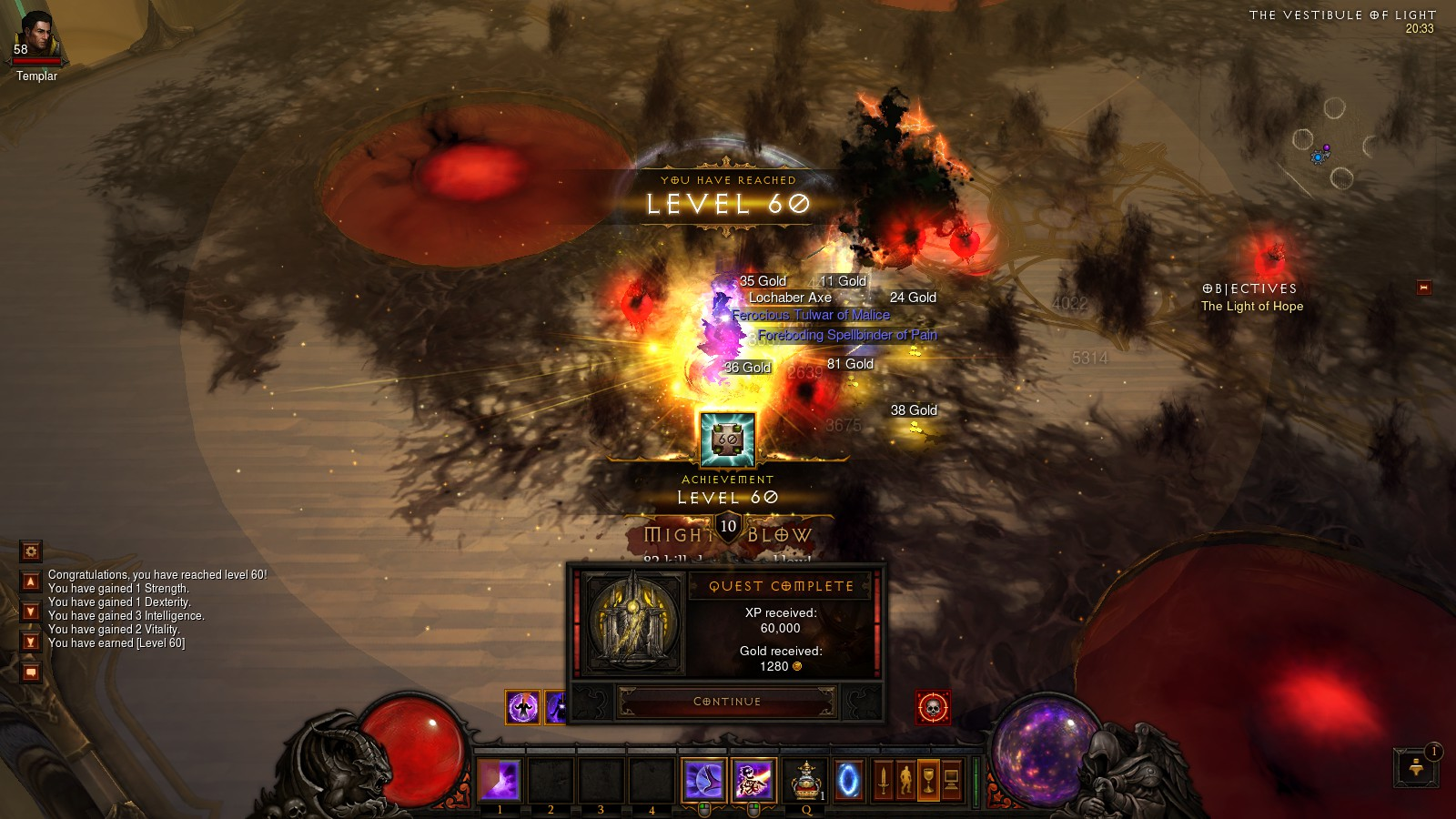
How does Diablo 3 get away with endless grinding?
During this current era of games, some games just get away with incredibly repeatable content. Diablo is the perfect example. Players are happy to play and replay the same levels, the same bosses, the same content over and over and over again to search for metagame goals. Players seek to find the best loot, build up the best gear, to defeat impossibly balanced challenges in the late game.
But when coming up with new game designs for Free-To-Play, designers can hit issues when trying to stretch out their content. When designers start asking players to repeat over previous content, players always push back.
Why do I need to play through things I’ve already beaten?
Why can’t I just push ahead?
Players start leaving the game because it feels too “grindy”. Or some players believe the difficulty is beyond anything they are capable of because they don’t realise they need to grind to beat the boss. Players see behind the veil and realize that it’s “play this old content for x times or pay” and instead, they choose to leave. For good reason: your system is not interesting or exciting.
There are three core issues that I find can easily be fixed to make grinding more expected:
#1: Players can see a long grind ahead of them
The negative feeling of a grind comes in when a player believes they know exactly how many sessions they will need to play in order to progress. This is usually the precise moment when most players pack up and say this game is too tedious. It’s true: This is when the game becomes a bore. Players are just going through the motions to get an extrinsic reward (ex. currency, item, etc).
To fix this you need to add luck to your progression. Ensure the player can not fully see the time required to progress. Players should always feel a bit of hope: with a bit of luck and some skill, they can progress quickly over the next checkpoint.
To add more luck to your progression systems it’s about adding randomization to your rewards. Create a loot system. Allow the player to randomly get items which speed up their progression (ex. better weapons, better perks). Ensure the player is exposed to this system early and often. This will allow them to gain hope that the grind (even if long) could get much faster at any moment. The more they play, the higher their chances are that they get lucky and progress fast. This also becomes a moments of pride for the player — they are very likely to share their story with other players if they feel they are “cheating” the game by finding rare loot that no one else has.
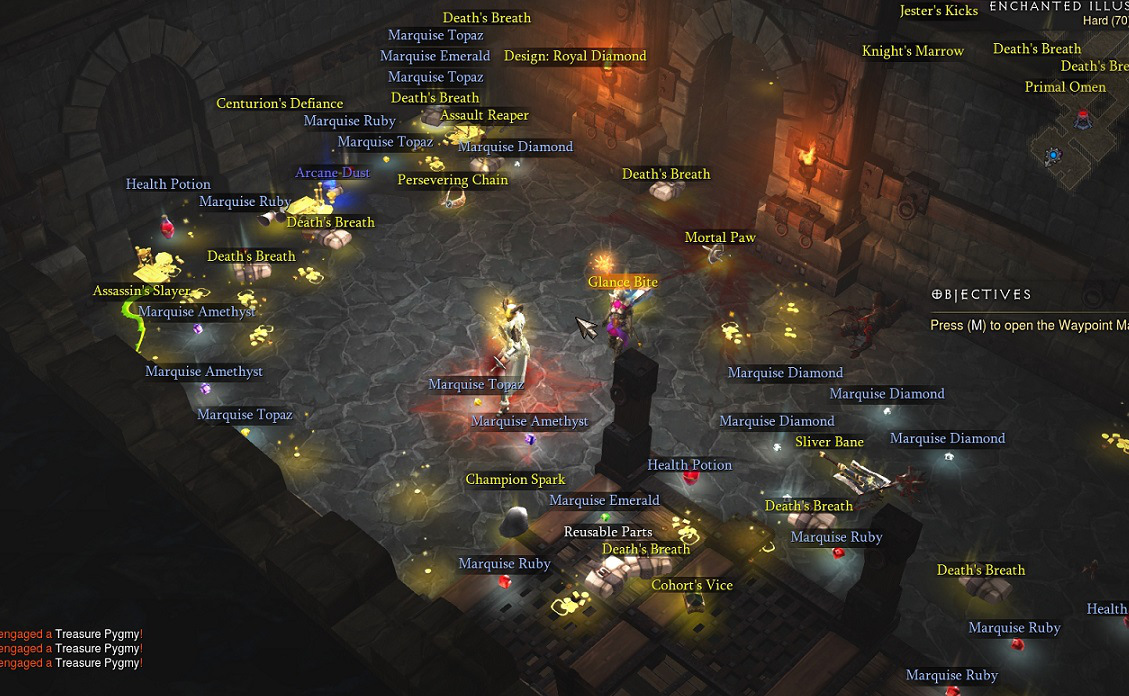
Adding Loot systems, like Diablo 3’s, is a great way to randomize a player’s progression speed.
There are other ways to make progression more exciting. You can also randomize the sources and sinks of your currencies more. If a building cost fluctuates (goes on sale during the week) then players will progress quickly and feel smart for taking advantage of a one-time offer.
Randomizing reward amounts (ex. randomly giving large sums of currency in a round of gameplay) can make the player save up and hope for a lucky round that will really push their progression forward quickly.
If the player can’t see their progression pace so easily, they will hold on to hope that their luck will change. They will feel really smart when they’ve finally collected an epic weapon. Most importantly they will continue to return to the game because the game does not feel like a grind.
#2: Players are not aware they need to grind
Most free to play games put a lot of emphasis on stats. When a player attempts a difficult level, their results depend on whether they equipped good enough gear and how well they played. In Clash of Clans, the whether or not you raid the base depends on how high your level of invading troops are as well as your ability to pick where they start.
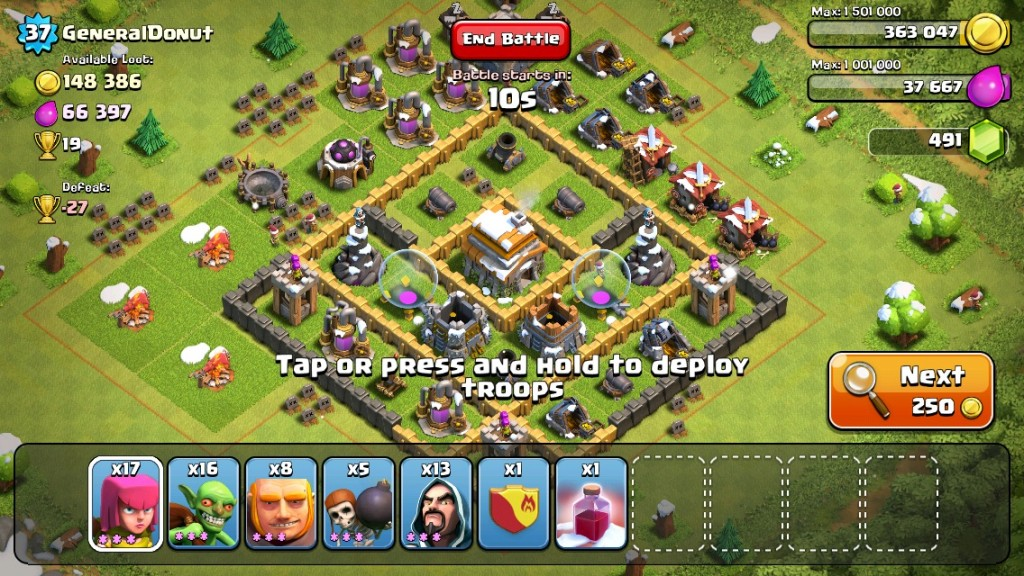
Clash of Clans has a balance between Stats and Skill. Placing players in the best possible way won’t guarantee victory unless you’ve got the best troops.
But for a player, figuring out which one of those two was incorrect at the end of a level is very difficult. Did I just not upgrade enough? Or was it where I placed my players?
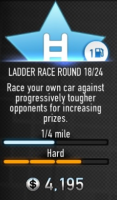
Some games make this equation really really opaque. Players can’t tell whether they need to upgrade more, or if they just pound away at a level they’ll eventually beat it. This can result in frustration in two ways: players endlessly attempt a level in an effort to beat it when they clearly can’t. Or they believe their skill has no impact and leave the game because it’s too rigged.
CSR and Deer Hunter have attempted to fix this with giving indication before the battle: make sure players are aware that their skill level needs to be very high to win this race, and show that as they upgrade these bars go down. This effectively separates the skill vs stats showing the player before they’ve even played what the chances are they’ll win. Allow the player to bet on their own skill, but give some transparency into how much of the result is actually dependent on their skill!
#3: Grinding is not expected
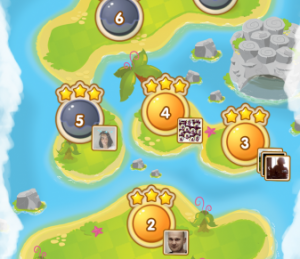
Jelly Splash progression is very simple — beat the next level. Jelly Splash has no stats in its progression. It doesn’t need grinding. Why? Because it has so much luck in the level design that players are happy to play the same level over and over and over again in order to beat it. Players are content to grind the same level because of near misses. Players are happy with this — the world map (or Saga map) gives them such clarity as to their progression that it works.
But Saga maps aren’t okay for every game. Players have played with these maps for long time, back since Super Mario on the Nintendo. A World map’s primary purpose is to show off your achievement of progress, and show you how far you need to go. Going back to previous levels? Why would a player ever do that?
Yet in many mobile games, this is how it is done. They provide a world map, and the only way to progress was to grind on the previous level enough times until you had the necessary gear to move forward. This is the only choice, and it gets tiring quickly. There has to be a better design than this.
Again, CSR was the pioneer here. They realised that a world map sends the wrong signals to players. If the only choice your world map is providing is whether to go for the next level or grind the previous level, then you really have too simple of a choice. Instead CSR opted for this view:
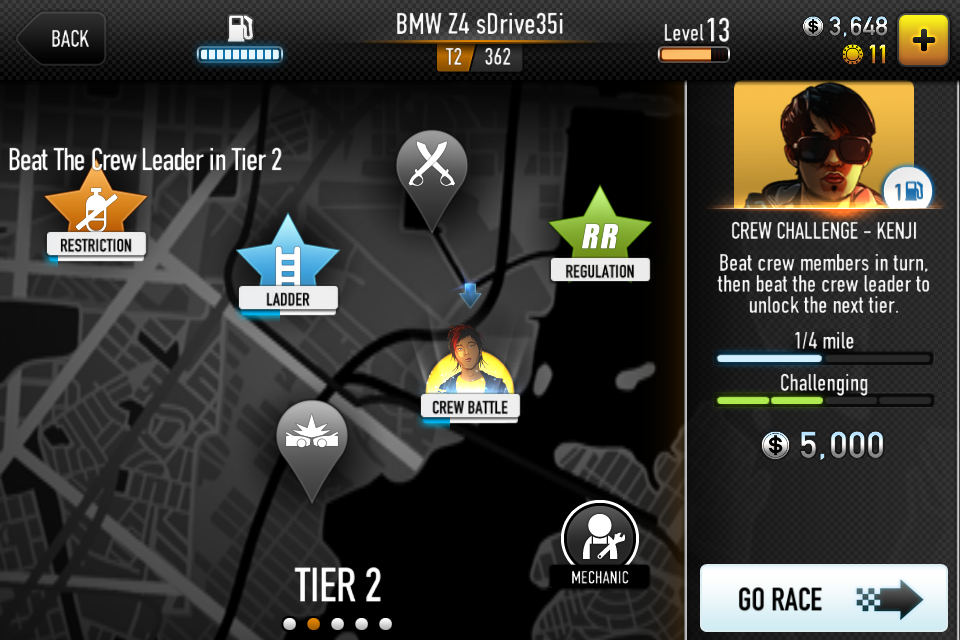
By making multiple modes the focus on the map, CSR has made grinding expected.
The key here is that players have multiple modes with different risk/reward which they can choose from. Players can choose based on their skill and their sessions how to optimize their grind. Players can feel smart about the choices they make. Bosses are only one of many options on the map, rather than the full focus of the screen. So players now expect that they will have to race in other modes before they are fully ready to take on the boss. If grinding is expected, then rethink your map design.
To make players feel good about grinding:
- Add luck to your progression so it’s not always clear how quickly you’ll progress
- Ensure players understand when they need better stats versus improved skill
- Make sure your map sets the expectation that grinding is necessary
In the end players will have a proper expectation of your game. They will start making choices to optimize their grind and feel smart about it. When players feel smart about choosing to grind, then you’ve solved the grinding problem.









































